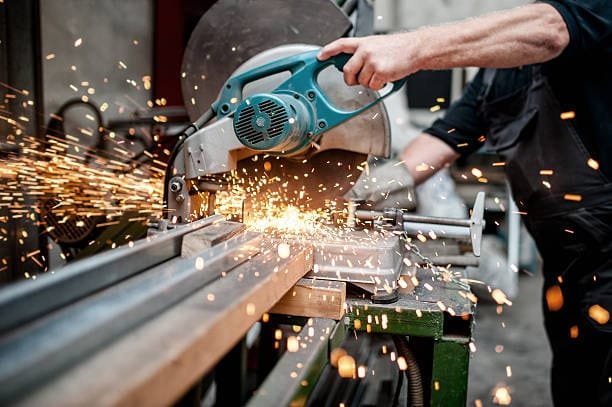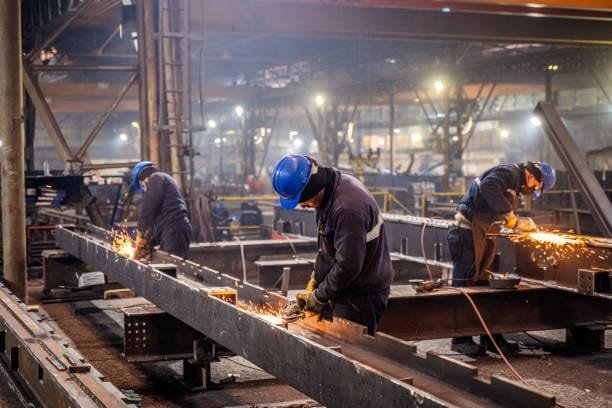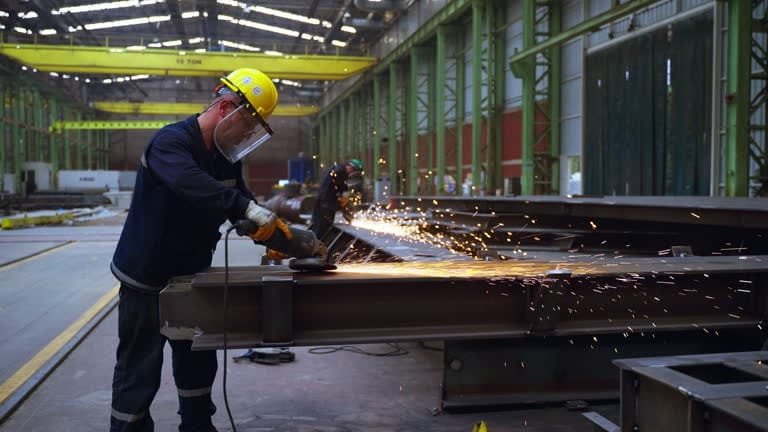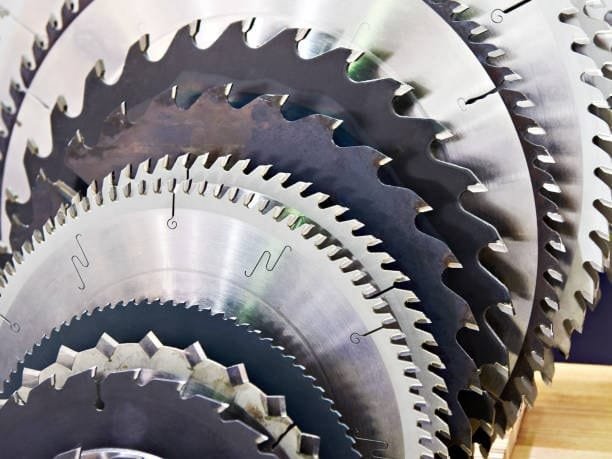Although cutting metal with a circular saw seems like a difficult chore, with the correct tools, approaches, and safety precautions it becomes a quick and effective method. Using a circular saw for metal cutting will save time and effort whether your project is professional construction, metal fabrication, or do-it-yourself and guarantees accuracy. From selecting the correct blade to detailed instructions, safety precautions, and professional advice for obtaining the best results, this complete guide will walk you through everything you need to know about cutting metal with a circular saw.
Understanding the Circular Saw and Its Metal-Cutting Capabilities

Originally a machine used mostly for cutting wood, a circular saw is a flexible power tool that, with the correct adjustments, can be quite successful for cutting metal. Successful metal cutting with a circular saw depends on the blade selection, cutting method, and tool handling technique.
1. What Types of Metal Can You Cut with a Circular Saw?
One should first be aware of the kinds of metal a circular saw can cut before beginning. The composition and thickness of the metal determine how suited a circular saw is. These are a few often used metals you could cut:
- Using carbide-tipped blades, both aluminum and copper can be readily cut.
- Using specialist metal-cutting blades, a circular saw can cut mild steel and stainless steel.
- For clean cuts, brass and bronze metals call for abrasive or carbide-tipped blades.
- Cutting cast iron is not best with circular saws; an angle grinder is a better choice.
2. Choosing the Right Circular Saw for Metal Cutting
Not all electric circular saws are meant to cut metal effectively. Several important considerations should guide your choice of a circular saw for metal cutting:
- A high-powered saw—at least 15 amps— guarantees more consistent cuts.
- Variable speed settings enable control of blade speed and help to prevent overheating.
- Retachable blade guards improve safety during metal cutting.
- Look for a saw made especially for cutting metal to guarantee lifetime.
Choosing the Right Blade for Cutting Metal

When working with metal, achieving exact, clean cuts depends critically on the blade chosen. Incorrect blade choice can cause sparks, too much heat, and blade wear. These are the best choices for circular saw blades for metal cutting:
1. Carbide-Tipped Blades
Cutting non-ferrous metals like aluminum, copper, and brass calls for carbide-tipped blades. Their longer lifetime and better cuts than abrasive blades make sense.
2. Abrasive Blades
Cutting steel is usually done with an abrasive wheel or cutoff wheels. Though they have a short lifespan, they provide a reasonably priced alternative for sporadic use.
3. Diamond Blades
Although most often used in masonry, some diamond blades are made for cutting metal. Though costly, they are quite durable.
4. Specialized Metal-Cutting Blades
Designed especially for cutting metal and plastic, these blades have heat-resistant coatings and unique tooth geometry to reduce friction and heat buildup.
Preparing for Metal Cutting
Ensuring a safe and effective cutting process depends mostly on preparations. Use these guidelines prior to beginning cutting:
1. Wear Proper Safety Gear
Sharp debris and sparks produced by cutting metal make protective gear absolutely necessary. Make sure you always wear protective gear you are wearing:
- Safety goggles or a complete-face shield
- Heavy-duty gloves
- ear covering
- Respirator or dust mask
- Long sleeves to guard your skin
2. Secure the Workpiece
To guarantee the metal stays firmly in place, always use a vise or clamps. Unstable workpieces run the danger of injury and lead to inaccurate cuts.
3. Mark the Cut Line
Clearly mark the metal surface with a permanent marker or chalk. A straightedge or ruler guarantees precision.
4. Adjust the Saw Depth
To lower resistance and maximize efficiency, set the blade depth somewhat beyond the metal’s thickness.
Step-by-Step Guide to Cutting Metal with a Circular Saw

Use these guidelines to precisely cut metal once your tools and supplies are ready:
Step 1: Select the Right Speed Setting
Choose a lower speed if your saw has varying speed settings to help to lower heat generation and stop early blade wear.
Step 2: Position the Saw Properly
Orient the saw with the designated cut line. Stance steadily and hold the saw firmly with both hands.
Step 3: Begin the Cut Slowly
Approach slowly and steadily first. Using too much force might cause overheating and might ruin the blade.
Step 4: Maintain a Consistent Speed
Let the saw blade handle things. To get perfect, neat cuts, keep a consistent speed appropriate blade up.
Step 5: Finish the Cut and Let the Blade Cool
Let the blade cool once the material being cut is finished before handling it. Metal-cutting generates heat; the blade can stay hot for some time.

Common Mistakes to Avoid
By avoiding these common errors, your cuts will be better and your saw and blades will last longer:
- Always make use of a blade intended for metal cutting.
- Ignoring Safety Equipment: Sparks and trash seriously increase risk.
- Not Getting the Workpiece: Moving unclamped metal causes inaccurate cuts.
- Applying too much pressure could damage and overheate the blade.
Safety Precautions When Cutting Metal

Using power tools always requires first consideration for safety personal experience. Take these necessary care:
1. Work in a Well-Ventilated Area
Particularly in cutting painted or covered metal, metal cutting can generate fumes. Make sure your ventilation is correct or use an exhaust system.
2. Keep a Fire Extinguisher Nearby
Cutting metal can spark flammable objects. Always carry a fire extinguisher close at hand.
3. Inspect the Blade Before Use
Before beginning the cut, look for any damage—such as cracks or missing teeth power source.
4. Avoid Cutting Small Metal Pieces
Small piece cutting can be hazardous since they might change direction suddenly. For better control instead, use a bandsaw or an angle grinder.
Alternative Tools for Cutting Metal

Although a circular saw is a great tool for cutting metal, there are other possibilities that might be more fit for particular jobs:
- Great for quick, rough cuts and grinding edges is an angle grinder.
- On thick metal, bandsaw cuts are exact and smooth.
- Perfect for tearing through thick steel sheets is plasma cutter.
- For complex, curved cuts, jigsaw with a metal blade is quite handy.
Conclusion
When done right, using a circular saw to cut metal is a great approach. Choosing the correct blade, fastening the workpiece, and adhering to correct safety precautions will help you to make exact, clean cuts with least effort different blades. Learning this method will improve your efficiency and workmanship whether your project is professional metal fabrication or home improvement cold saw.

